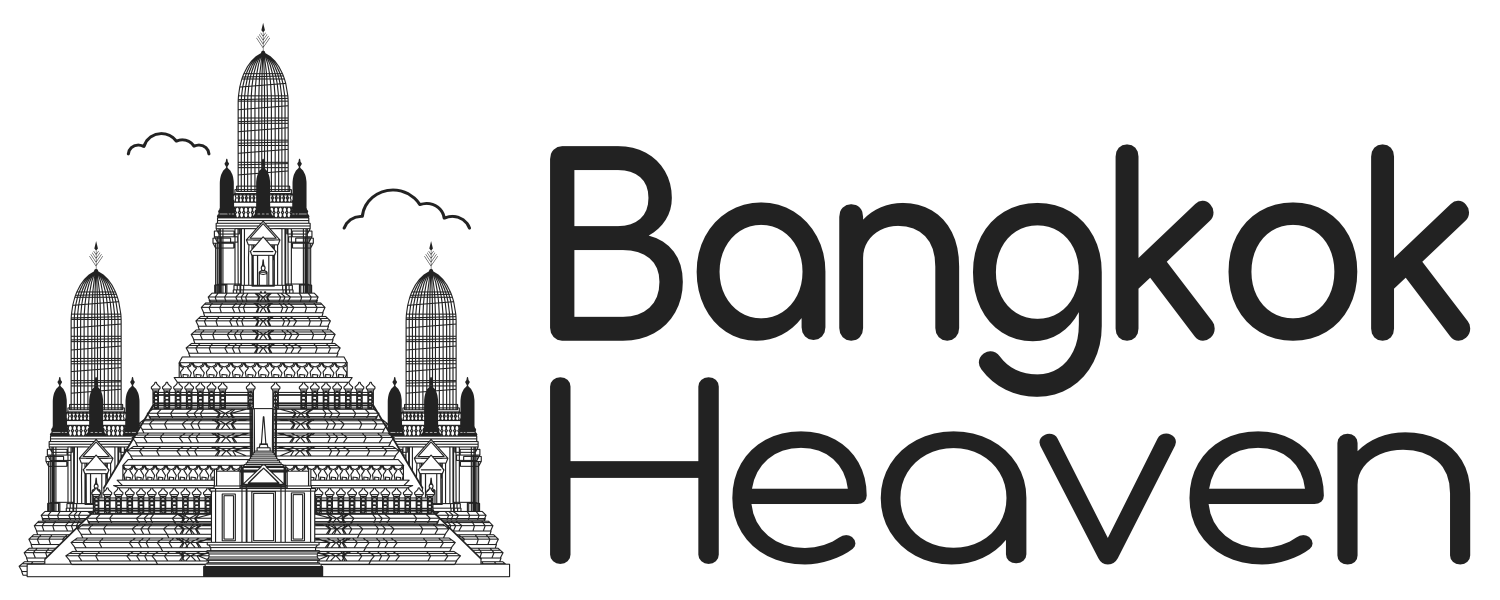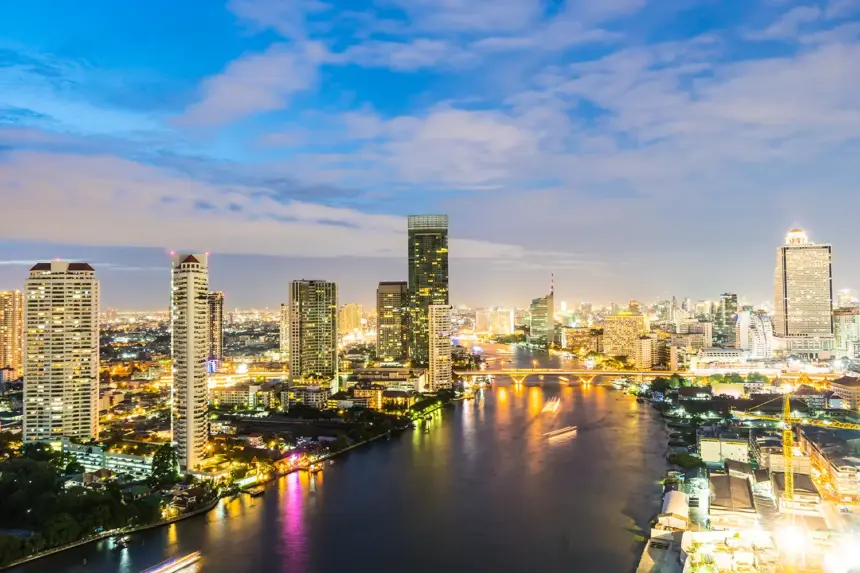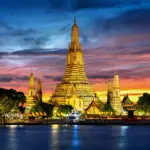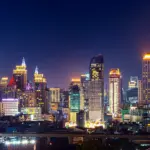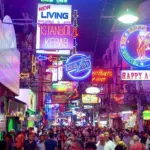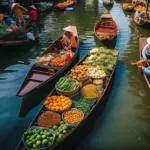Bangkok: The Vibrant Heart of Thailand
Bangkok, the capital city of Thailand, is a sprawling metropolis that captures the essence of modern Asia. With its blend of ancient temples, bustling markets, towering skyscrapers, and vibrant nightlife, Bangkok is a city of contrasts that embodies the spirit of a nation that has successfully balanced tradition and modernity.
As the political, economic, and cultural center of Thailand, Bangkok plays a crucial role in the country’s identity, shaping its past, present, and future. This article delves into the multifaceted character of Bangkok, exploring its history, culture, economy, and the unique charm that makes it one of the most dynamic cities in the world.
Historical Background
The history of Bangkok is intricately linked to the history of Thailand itself. Before Bangkok became the capital, the Kingdom of Ayutthaya was the center of power in the region. However, after Ayutthaya was destroyed by the Burmese in 1767, the capital was moved south to Thonburi, a settlement on the western bank of the Chao Phraya River. Thonburi served as the capital for a brief period before King Rama I, the founder of the Chakri dynasty, established the new capital across the river in 1782, naming it Krung Thep, or the “City of Angels.” The full ceremonial name of Bangkok, which is the longest city name in the world, reflects the grandeur and significance that the city held from its inception.
The early years of Bangkok were marked by the construction of grand palaces, temples, and fortifications to solidify its status as the heart of the new kingdom. The Grand Palace, home to the revered Emerald Buddha, became the symbolic and political center of the kingdom. Bangkok quickly grew in importance as a hub of trade, culture, and administration. By the 19th century, it had established itself as a vital link between the West and the East, attracting traders, diplomats, and missionaries from around the world.
Cultural Richness and Religious Heritage
Bangkok’s cultural landscape is a vibrant tapestry woven from centuries of religious, artistic, and culinary traditions. One of the most prominent aspects of Bangkok’s culture is its deep connection to Buddhism, which permeates daily life in the city. With over 400 temples scattered across the metropolis, Bangkok is often referred to as the “City of Temples.” Each temple, or wat, has its own unique history and architectural style, reflecting the diverse influences that have shaped the city.
The Temple of the Emerald Buddha (Wat Phra Kaew) is perhaps the most famous and sacred of all the temples in Bangkok. Located within the grounds of the Grand Palace, Wat Phra Kaew houses the Emerald Buddha, a highly revered statue believed to bring prosperity and protection to Thailand. The temple’s intricate architecture, adorned with gold leaf, colorful mosaics, and towering spires, showcases the artistic achievements of the Rattanakosin era.
Another iconic temple is Wat Arun, also known as the Temple of Dawn. Situated on the banks of the Chao Phraya River, Wat Arun is renowned for its stunning spire (prang) that rises 70 meters into the sky, adorned with porcelain tiles and seashells that glisten in the sunlight. The temple’s riverside location and its magnificent design make it one of the most photographed landmarks in Bangkok.
Bangkok is also home to Wat Pho, the Temple of the Reclining Buddha, which houses a massive 46-meter-long statue of Buddha in a reclining position. Wat Pho is not only a place of worship but also a center of traditional Thai medicine and massage, reflecting the holistic approach to well-being that is deeply rooted in Thai culture.
Beyond its religious significance, Bangkok is a melting pot of cultures, where traditional Thai customs coexist with influences from China, India, and the West. This cultural fusion is evident in the city’s festivals, cuisine, and everyday life. The Chinese New Year celebrations in Yaowarat (Chinatown), for instance, showcase the vibrant Chinese heritage that has been an integral part of Bangkok’s identity for centuries.
The Economic Powerhouse of Thailand
Bangkok is the economic engine of Thailand, contributing significantly to the country’s GDP and serving as a major financial hub in Southeast Asia. The city’s economy is diverse, with key sectors including tourism, finance, real estate, retail, and manufacturing.
,Tourism is one of Bangkok’s most important industries, attracting millions of visitors each year. The city’s unique blend of ancient and modern attractions, along with its reputation for hospitality, makes it a top destination for travelers from around the globe. Landmarks such as the Grand Palace, Wat Arun, and the bustling markets of Chatuchak and Damnoen Saduak draw tourists eager to experience the rich cultural heritage of Thailand.
In addition to its cultural sites, Bangkok is known for its shopping districts, which range from luxurious malls like Siam Paragon and CentralWorld to bustling street markets where everything from local crafts to the latest fashion trends can be found. The city’s markets, such as the sprawling Chatuchak Weekend Market and the vibrant Asiatique The Riverfront, offer a unique shopping experience that reflects the diversity and energy of Bangkok.
Bangkok’s financial sector is another pillar of its economy. The city is home to the Stock Exchange of Thailand (SET) and serves as the headquarters for many of Thailand’s largest banks, corporations, and multinational companies. The city’s skyline, dominated by gleaming skyscrapers, is a testament to its status as a modern metropolis and a key player in the global economy.
Real estate and construction have also been booming in Bangkok, with rapid urbanization leading to the development of new residential, commercial, and mixed-use projects. The city’s skyline is constantly evolving, with new high-rise buildings and infrastructure projects reshaping the urban landscape. Despite this rapid development, Bangkok has managed to preserve its historic neighborhoods and traditional architecture, creating a city where the past and present coexist harmoniously.
Transportation and Infrastructure
Bangkok’s transportation system is as dynamic and complex as the city itself. The Chao Phraya River, historically the lifeblood of Bangkok, remains a vital transportation route, with ferries, water taxis, and long-tail boats providing an alternative to the congested streets. The river offers a scenic and efficient way to navigate the city, connecting key cultural and commercial districts.
On land, Bangkok’s road network is extensive but often plagued by traffic congestion, a common challenge in many rapidly growing cities. The city’s traffic woes have been mitigated to some extent by the expansion of its public transportation system, which includes the Bangkok Mass Transit System (BTS Skytrain), the Metropolitan Rapid Transit (MRT) subway, and the Airport Rail Link. These modern rail systems have made commuting more efficient and provided a viable alternative to driving in the city’s notorious traffic.
Tuk-tuks, motorbike taxis, and traditional taxis are also ubiquitous in Bangkok, offering convenient, if sometimes chaotic, means of getting around. The city’s public bus network, though less popular with tourists, is another option for navigating the sprawling metropolis.
In recent years, Bangkok has invested heavily in infrastructure development, including the construction of new expressways, bridges, and public transport lines. These efforts are part of a broader strategy to improve connectivity, reduce congestion, and enhance the overall quality of life for residents and visitors alike.
Bangkok’s Dynamic Social Scene
One of the defining features of Bangkok is its vibrant and diverse social scene. The city’s nightlife is legendary, offering everything from high-end rooftop bars with stunning views of the skyline to bustling street food markets where the aroma of grilled meats, spices, and fresh herbs fills the air.
Bangkok’s dining scene is a reflection of its cosmopolitan character, with a plethora of options ranging from Michelin-starred restaurants to humble street vendors serving up some of the best Thai food in the world. The city is particularly famous for its street food, which has become an integral part of its cultural identity. Whether it’s a plate of pad Thai, a bowl of boat noodles, or a skewer of grilled satay, Bangkok’s street food is a culinary experience that is not to be missed.
The city’s entertainment options are equally diverse. Bangkok is home to a thriving arts scene, with numerous galleries, theaters, and cultural centers showcasing both traditional and contemporary works. The Bangkok Art and Culture Centre (BACC) is a hub for the city’s creative community, hosting exhibitions, performances, and workshops that highlight the talents of local and international artists.
For those interested in shopping and leisure, Bangkok offers a wide range of experiences, from luxury malls to night markets. The city’s shopping malls are not just retail spaces but also social and cultural hubs, offering everything from high-end fashion to local crafts, as well as cinemas, restaurants, and entertainment venues.
Challenges and Future Prospects
While Bangkok is a city of many strengths, it also faces significant challenges. Rapid urbanization has led to issues such as traffic congestion, pollution, and inadequate infrastructure in some areas. The city’s informal settlements and slums are a stark contrast to its gleaming skyscrapers, highlighting the socio-economic disparities that exist within the metropolis.
Environmental concerns, particularly air and water pollution, are also pressing issues for Bangkok. The city’s government has been working on various initiatives to address these challenges, including improving public transportation, promoting green spaces, and investing in sustainable urban development.
Looking to the future, Bangkok is poised to continue its growth as a global city, balancing its rich cultural heritage with the demands of modernity. The city’s ability to adapt to changing circumstances while preserving its unique identity will be key to its success in the coming decades.
Conclusion
Bangkok is more than just the capital of Thailand; it is the beating heart of a nation, a city where the ancient and the modern coexist in a dynamic and ever-evolving landscape. Its rich history, vibrant culture, and economic
